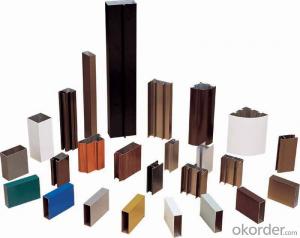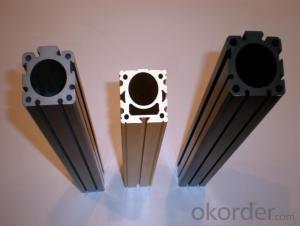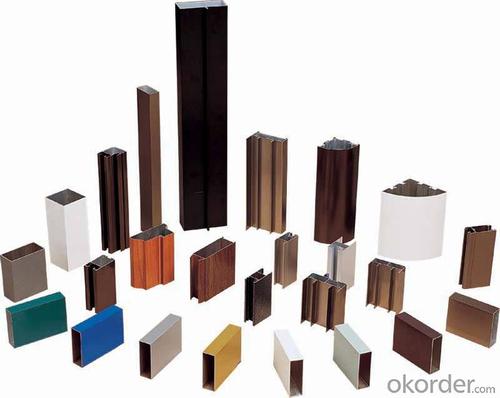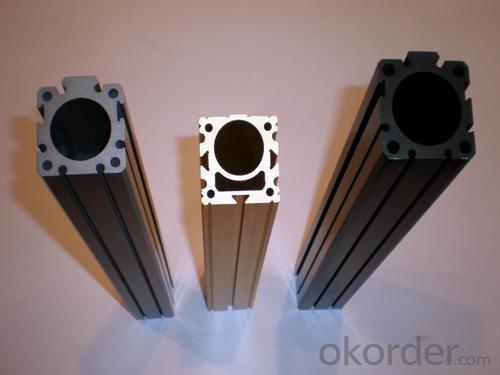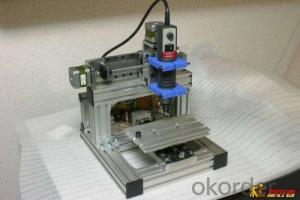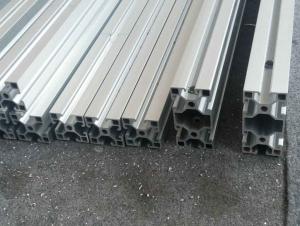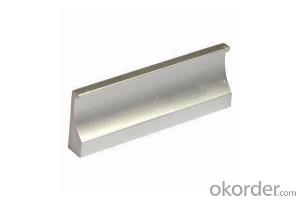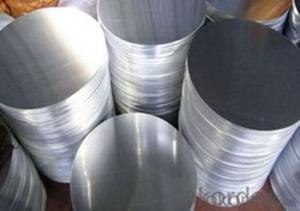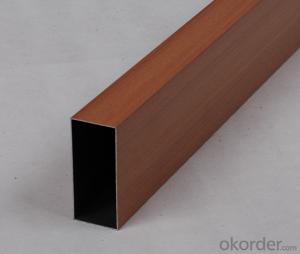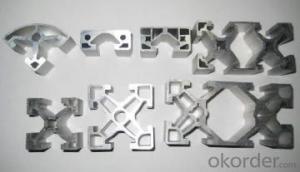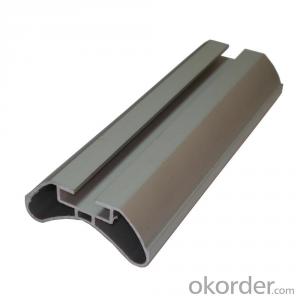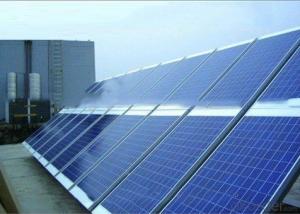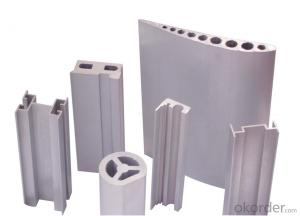T-Slotted Structural High Quality Aluminum Profiles - Hot Sale
- Loading Port:
- China Main Port
- Payment Terms:
- TT OR LC
- Min Order Qty:
- -
- Supply Capability:
- -
OKorder Service Pledge
OKorder Financial Service
You Might Also Like
Aluminium profile
1) Alloy: AA6061, AA6063
2) Temper: T5, T6
3) Series of surface treament:
1. Mill Finished
2. Anodizing: Silver, champagne, light bronze, dark bronze, black, light titanium, dark titanium.
3. Electrophoretic Coating: Silver, champagne, bronze, black, light bronze, dark bronze.
4. Electrostatic Color Powder Coating: Normal color, special color.
5. Fluorocarbon Powder Spraying: Normal color, special color.
6. Wood Grain Coating: Import paper, domestic paper.
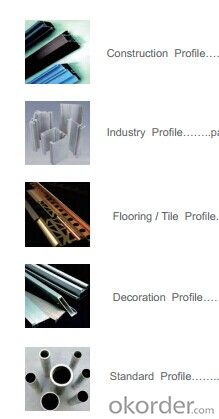
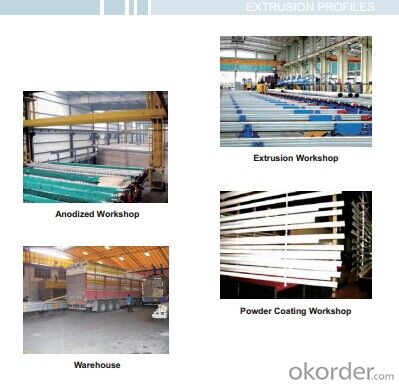
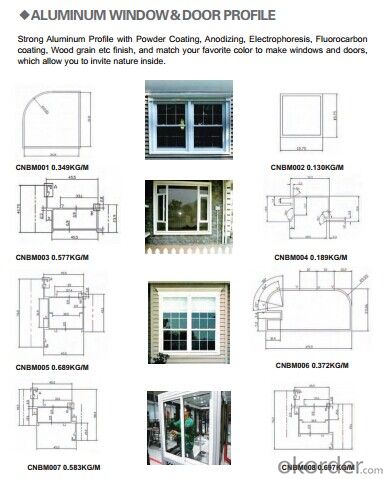
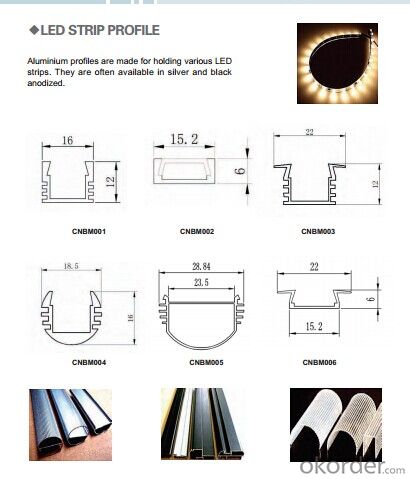
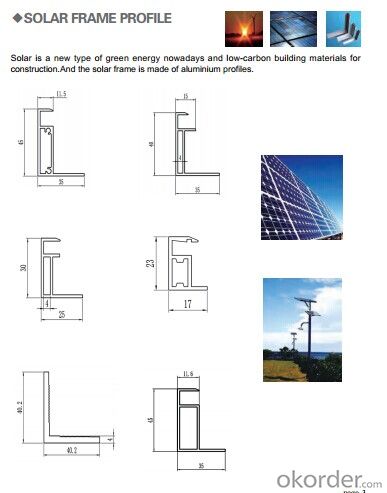
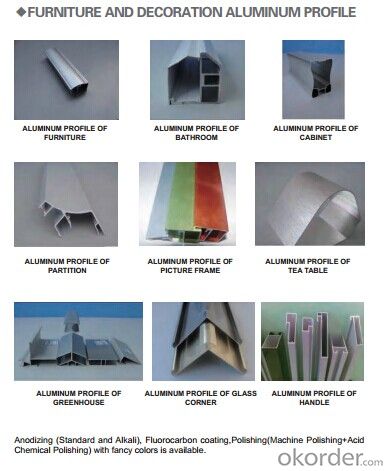
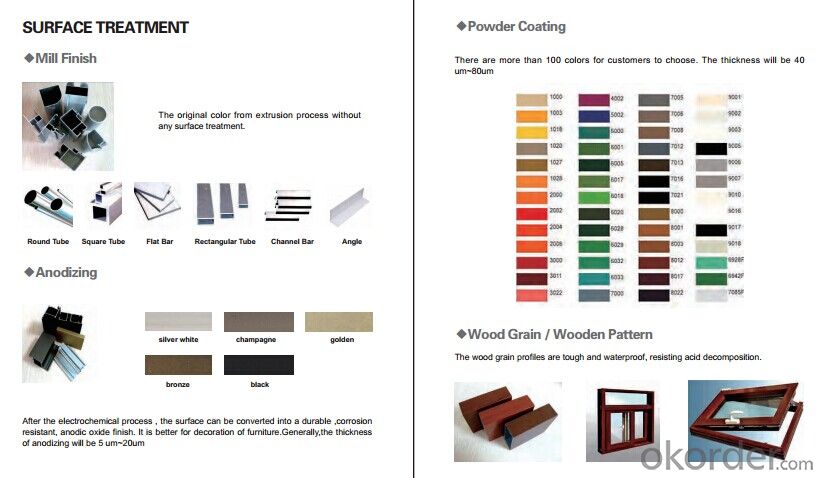
- Q: What are the various types of connectors that can be used with aluminum profiles?
- <p>Aluminum profiles can be connected using a variety of connectors designed for different applications and structural needs. Common types include: 1. T-slots connectors, which slide into the T-slots of the profiles for secure attachment. 2. Angle connectors, used to join profiles at right angles. 3. Corner brackets, for creating 90-degree corners. 4. Clamping blocks, which hold profiles together without screws. 5. Hinges, allowing for pivoting movements. 6. End caps, to cover the ends of profiles. 7. Cylindrical connectors, for joining round tubes. 8. Linear connectors, for straight-line connections. 9. Specialized connectors for specific applications, such as cable management or mounting brackets. These connectors are crucial for assembling aluminum profile systems in various configurations.</p>
- Q: This question asks about the various types of surface treatments or finishes that can be applied to aluminum profiles.
- <p>Aluminum profiles can be coated with different types of finishes to enhance their appearance, durability, and resistance to corrosion. Some common types of coatings include: 1. Anodizing, which creates a protective oxide layer on the surface. 2. Powder coating, a durable and colorful finish applied through an electrostatic process. 3. Electrophoretic coating, a method that uses electric current to apply a paint-like coating. 4. PVDF coating, a high-performance finish with excellent weather resistance. 5. Thermal spraying, which applies a coating through a high-velocity flame. 6. Vacuum coating, a process that deposits thin layers of material in a vacuum chamber. Each type of coating has specific properties and applications, making them suitable for different environments and uses.</p>
- Q: This question asks about the various applications of aluminum extrusions within the automotive manufacturing industry.
- <p>Aluminum extrusions are widely used in automotive manufacturing due to their lightweight, high strength, and corrosion resistance. They are utilized in several areas: 1) Structural components such as chassis, frames, and body parts to reduce vehicle weight and improve fuel efficiency. 2) Engine components to enhance engine performance and durability. 3) Heat exchangers and radiators for effective cooling systems. 4) Crash management systems to absorb impact during collisions. 5) Interior components like dashboards and door panels for lightweight and aesthetic appeal. 6) Electrical components such as battery casings and wiring harnesses. 7) Wheels and suspension components for improved handling and reduced unsprung weight. These applications contribute to the overall performance, safety, and efficiency of vehicles.</p>
- Q: Are aluminum profiles suitable for use in food processing environments?
- Yes, aluminum profiles are suitable for use in food processing environments. They are highly resistant to corrosion, lightweight, and easy to clean, making them ideal for ensuring food safety and maintaining hygienic conditions in such environments. Additionally, aluminum profiles are durable and have excellent heat and cold transfer properties, making them well-suited for various food processing applications.
- Q: What are the different types of aluminum alloys used for profiles?
- There are several different types of aluminum alloys that are commonly used for profiles. Some of the most common types include: 1. 6061 Aluminum Alloy: This alloy is one of the most versatile and widely used aluminum alloys. It offers a good combination of strength, weldability, and corrosion resistance. It is commonly used in structural applications and for making frames, railings, and automotive parts. 2. 6063 Aluminum Alloy: This alloy is known for its excellent formability and extrudability, making it ideal for producing profiles. It offers good corrosion resistance and can be easily shaped into complex designs. It is commonly used for architectural applications, such as window frames, door frames, and curtain walls. 3. 7075 Aluminum Alloy: This alloy is known for its high strength-to-weight ratio and excellent fatigue strength. It is commonly used in aerospace applications and for making high-performance products such as bicycle frames and sporting goods. 4. 5083 Aluminum Alloy: This alloy is primarily used in marine applications due to its excellent corrosion resistance in saltwater environments. It is commonly used for boat hulls, decks, and other marine structures. 5. 3003 Aluminum Alloy: This alloy is known for its good formability, corrosion resistance, and weldability. It is commonly used in general-purpose applications, such as signage, electrical enclosures, and kitchenware. These are just a few examples of the different types of aluminum alloys used for profiles. The selection of the alloy depends on the specific requirements of the application, such as strength, corrosion resistance, formability, and cost.
- Q: This question asks for methods to ensure that the installation of aluminum profiles is both cost-effective and efficient.
- <p>To ensure the installation of aluminum profiles is cost-effective and efficient, follow these steps: 1) Plan carefully: Use accurate measurements and detailed plans to minimize waste and rework. 2) Use quality materials: Invest in high-quality aluminum profiles to reduce maintenance and replacement costs. 3) Employ skilled labor: Well-trained installers can complete the job faster and with fewer errors. 4) Optimize the installation process: Streamline the process to reduce time and labor costs. 5) Regular maintenance: Proper care and maintenance can extend the life of aluminum profiles, saving on replacement costs. 6) Compare suppliers: Shop around for the best prices and quality to minimize costs. 7) Use modular designs: Modular systems can be more efficient to install and easier to modify in the future.</p>
- Q: Are aluminum profiles suitable for earthquake-resistant structures?
- Aluminum profiles can indeed be appropriate for structures that can withstand earthquakes. The lightweight and high-strength properties of aluminum offer numerous benefits when it comes to earthquake resistance. Firstly, the high strength-to-weight ratio makes it possible to construct lighter and more flexible buildings, which can better endure seismic forces. This is particularly important because it reduces the overall mass of the structure and lessens the inertia forces during an earthquake. Additionally, aluminum profiles possess outstanding corrosion resistance, ensuring the long-term durability and structural integrity of earthquake-resistant constructions. This is critical as corrosion can gradually weaken the structure, making it more susceptible to seismic events. Moreover, the malleability of aluminum allows for the creation of intricate and customized profiles, enabling architects and engineers to design structures that can effectively absorb and dissipate seismic energy. This flexibility is crucial in earthquake-resistant design because it allows the structure to deform and absorb the energy generated during an earthquake, thus minimizing the impact on the building and its occupants. Furthermore, aluminum is an environmentally friendly material as it is highly recyclable and requires significantly less energy to produce compared to other metals. Consequently, it is an eco-conscious choice for earthquake-resistant structures. Nevertheless, it is important to note that the suitability of aluminum profiles for earthquake-resistant structures depends on various factors, including specific design requirements, local seismic conditions, and the expertise of the engineers and architects involved. As a result, a thorough analysis and evaluation of the particular project requirements and conditions should be carried out before determining the appropriateness of aluminum profiles for earthquake-resistant structures.
- Q: Is it possible to utilize aluminum profiles as a material for exterior wall cladding?
- <p>Yes, aluminum profiles are commonly used for exterior cladding due to their durability, low maintenance, and resistance to corrosion. They are lightweight, easy to install, and can be designed in various shapes and sizes to suit architectural requirements. Additionally, aluminum profiles offer excellent weather resistance and can be painted or anodized to provide a protective finish and aesthetic appeal.</p>
- Q: Are aluminum profiles suitable for furniture applications?
- Indeed, furniture applications can benefit from the use of aluminum profiles. Aluminum, known for its versatility and lightweight nature, offers numerous advantages in furniture design and construction. To begin with, aluminum profiles boast exceptional strength and durability, making them the perfect fit for furniture that endures regular use and bears weight. Moreover, their resistance to corrosion allows for their usage both indoors and outdoors, without the worry of rusting or deterioration over time. Furthermore, aluminum profiles provide design flexibility. They can be effortlessly molded and shaped into various forms and sizes, allowing for the creation of innovative and unique furniture designs. Additionally, aluminum profiles can be extruded into diverse profiles and sections, enabling customization and adaptation to different furniture styles and requirements. Additionally, aluminum is an environmentally friendly material that can be recycled repeatedly without compromising its properties. This sustainable feature makes it an ideal choice for furniture applications. In conclusion, aluminum profiles offer a blend of strength, durability, versatility, and sustainability, making them highly suitable for a wide range of furniture applications.
- Q: Are aluminum profiles resistant to chemicals or solvents?
- Yes, aluminum profiles are generally resistant to chemicals and solvents. Aluminum is known for its excellent corrosion resistance, and this property extends to its resistance to most chemicals and solvents. However, it is important to note that the level of resistance can vary depending on the specific chemical or solvent involved. Some highly corrosive chemicals or solvents may still have an effect on aluminum profiles over time. Therefore, it is advisable to consult the manufacturer or conduct specific tests to ensure compatibility with a particular chemical or solvent.
Send your message to us
T-Slotted Structural High Quality Aluminum Profiles - Hot Sale
- Loading Port:
- China Main Port
- Payment Terms:
- TT OR LC
- Min Order Qty:
- -
- Supply Capability:
- -
OKorder Service Pledge
OKorder Financial Service
Similar products
Hot products
Hot Searches
Related keywords
